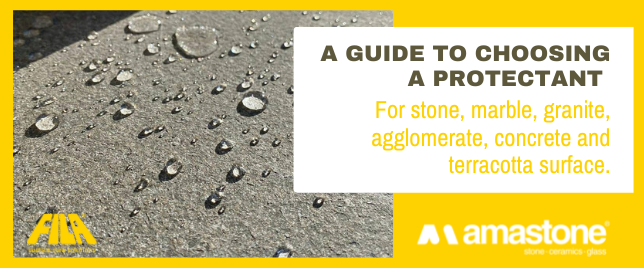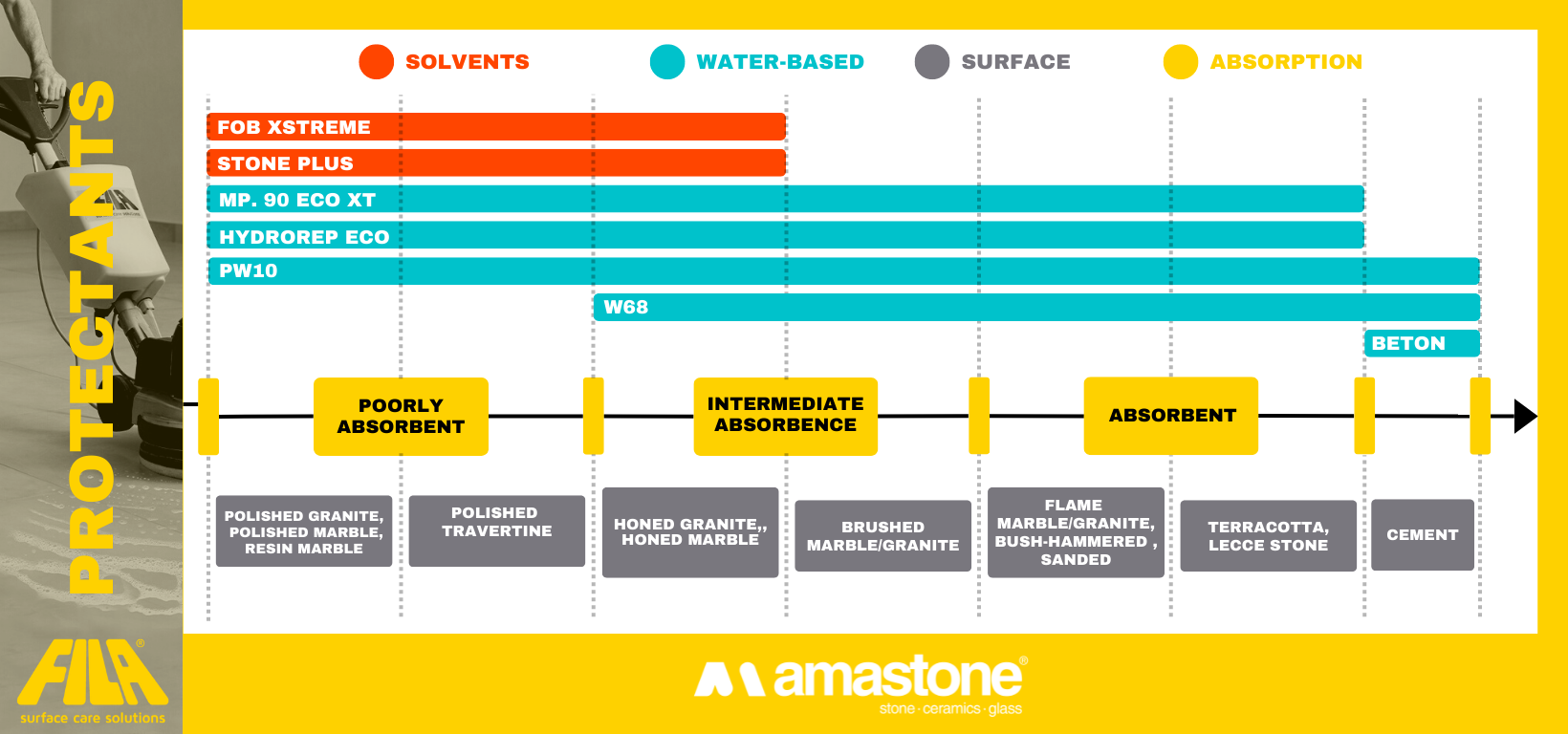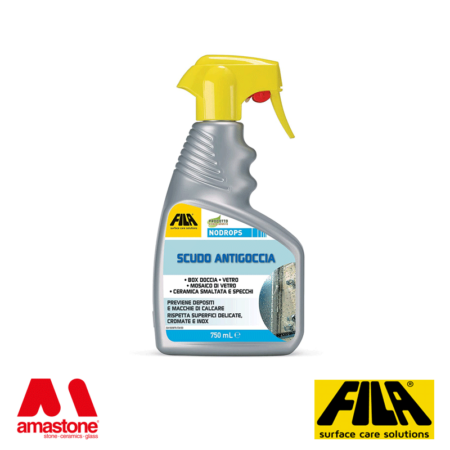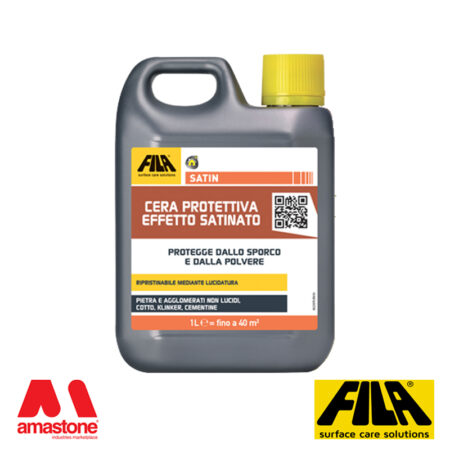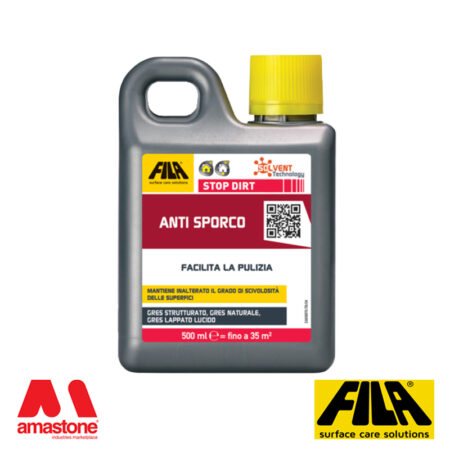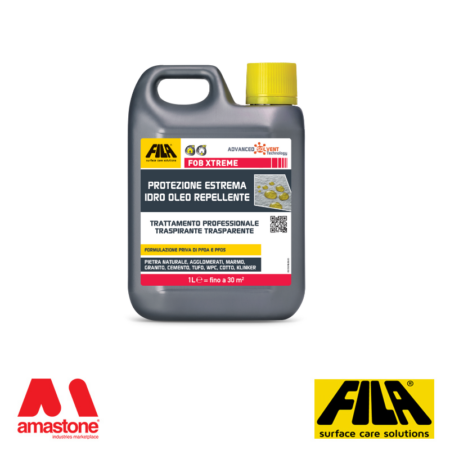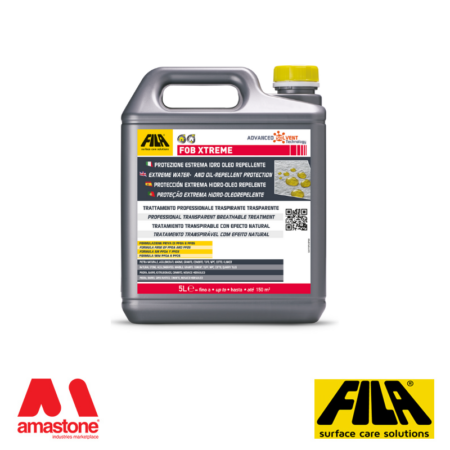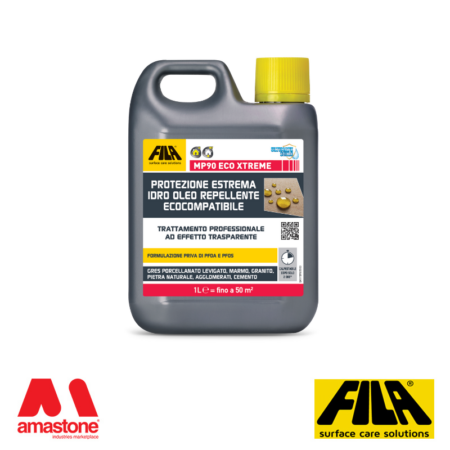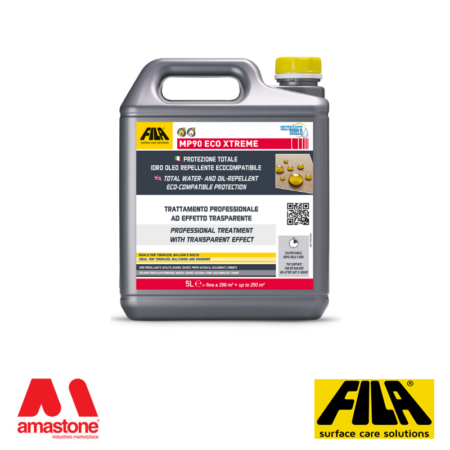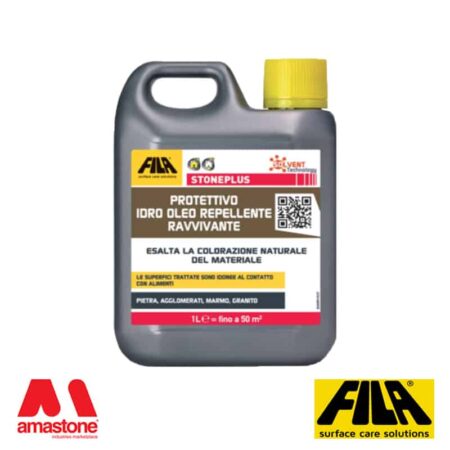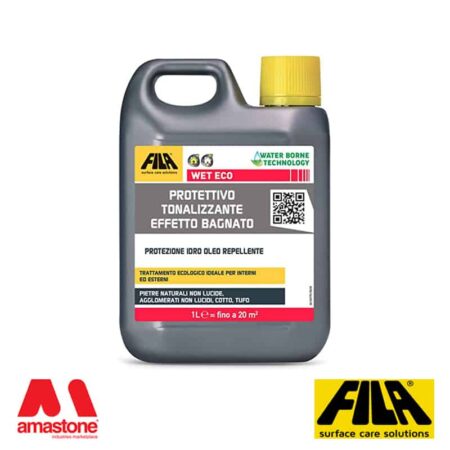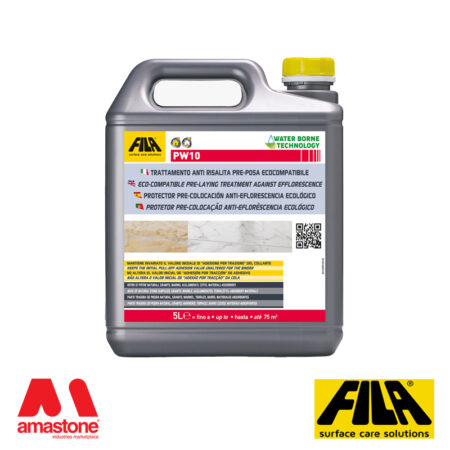Whether you are a stonemason or a stone-care specialist, this guide can be useful to you. Applying a protectant at the end of a job is an increasingly popular service. It also helps avoid hassles and complaints due to requests to remove streaks and stains.
We wrote the guide in collaboration with Fila Solution, a leading manufacturer of products to protect, clean, and maintain marble, natural stone, porcelain, terracotta, and wood surfaces.
—————————————
Prevention is better than cure. This proverb gets to the heart of this post; when it comes to treating surfaces (whether it be natural stone, quartz agglomerate, marble-resin, terracotta, concrete, etc.), it is far better to treat the material with specially-formulated professional products to avoid ruining the material irreparably during daily use
How do I choose the correct protectant from Fila’s vast array of products?
The surface protectant is chosen based on a specific characteristic: the material’s absorption. To simplify, we can divide materials into three categories:
1. Low-absorbency – such as polished granite/marble, resined marble, quartz-resin, marble-resin
2. Medium-absorbency surfaces: e.g., polished travertine, honed or brushed marble/granite, honed limestone
3. Absorbent surfaces: e.g., terracotta, cement, Lecce stone, bush-hammered, sanded, or flamed surfaces.
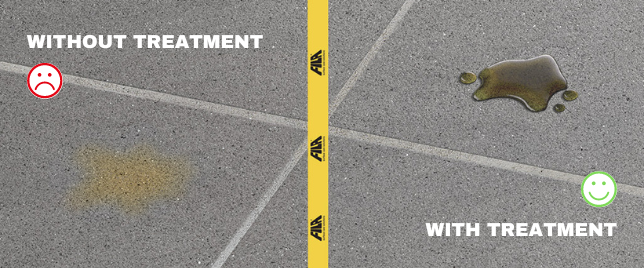
Courtesy of www.filasolutions.com
Having identified the absorbency level of the material to be treated, we can choose the type of protectant to use.
Protectants, in fact, fall into two main categories:
1. Solvent-Based Protectants
2. Water-Based Protectants
Brief introduction: For a protectant to perform its protective function, it must remain on the surface and create a very thin micro-film (imperceptible to the eye, naturally) on the material to protect it against external agents such as coffee, oil, wine, smog, or rain, depending on whether the application is for indoor or outdoor flooring.
Solvent-Based Protectants
A solvent is simply the carrier of the product within the material. Solvent-based protectants can thus penetrate the material to a small degree, managing to protect the surface more effectively. Precisely for this reason, they are used to treat poorly absorbent materials such as polished marble or granite. Which solvent-based protectant should I choose?
The two most widely used products among the gamut of FILA Solutions’ are:
- FOB Xtreme – a water-and oil-repellent protectant with a neutral (non-toning) effect
- Stone Plus – a water and oil-repellent protectant with a toning effec
Water-Based Protectants
On the other hand, when surfaces are very absorbent, the solvent carries the product “too deep,” exposing the surface to be protected. In this case, therefore, the solvent is not only unnecessary but actually renders the protection ineffective.
When this is the case, water-based protectants should be used.
Another consideration that must not be underestimated: Solvent-based protectants must be applied on completely dry surfaces: In contrast, water-based protectants can even be applied on surfaces with residual moisture.
Which water-based protectant should I choose?
The choice depends on the type of protection you wish to achieve
If all you want to achieve is water-repellent protection: Hydrorep Eco.
If you want to achieve water- and oil-repellent protection: MP90 Eco Xtreme
For oil- and water-repellent treatment consolidating friable surfaces and protecting against efflorescence and rising damp to be used before laying: PW10.
PW10 protectant should be applied, before laying, on all sides of the material, including the edges, to prevent rising pollutants and surface streaks or stains from formin.
The recommended protectant for water- and oil-repellent protection on unpolished “super-absorbent” surfaces such as very porous rough natural stone, concrete, terracotta, and tuff is Fila W68.
For anti-mold protection: Fila Active2. This is a water-based protectant that inhibits the colonization of mold. It is often used as a primer protectant before painting.
Using this guide, you can navigate your way to select the correct Fila protectant. Should you have any questions or for special applications, please contact our technical support () or call if you have any questions or for special applications. Remember that all products should first be tested for possible color changes on a small portion of the surface to be treated. Remember also that no protective product will ever protect against acidic attack (e.g., lemon juice) but will protect against and slow the formation of streaks and stains.

 Diamond Blades
Diamond Blades Angle Grinder Tools
Angle Grinder Tools Polishing Machine Tools for Stone, Marble and Granite
Polishing Machine Tools for Stone, Marble and Granite Texture tooling
Texture tooling Adhesives and glue
Adhesives and glue Ceramic, Granite and Marble Drill Bits
Ceramic, Granite and Marble Drill Bits Sculpture – Stone carving tools
Sculpture – Stone carving tools Diamond Wires for Granite and Marble Quarries
Diamond Wires for Granite and Marble Quarries Cemetery and Graveyard Accessories
Cemetery and Graveyard Accessories CNC Vacuum Pods
CNC Vacuum Pods CNC Tool Holders
CNC Tool Holders CNC Tool Forks
CNC Tool Forks Positioning Alignment Lasers
Positioning Alignment Lasers Material Handling
Material Handling Machinery
Machinery Spare parts
Spare parts Electrical Spare Parts
Electrical Spare Parts Personal Protective Equipment
Personal Protective Equipment